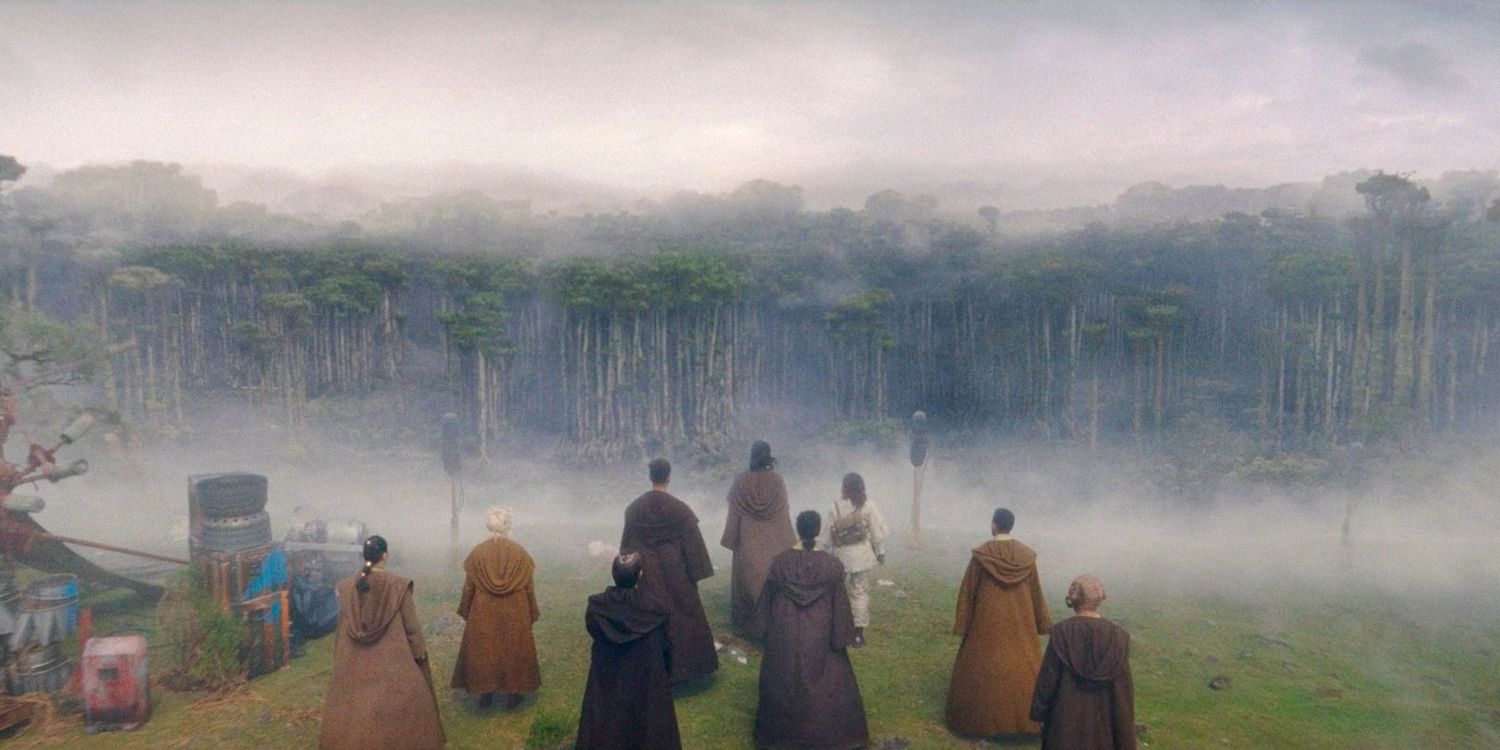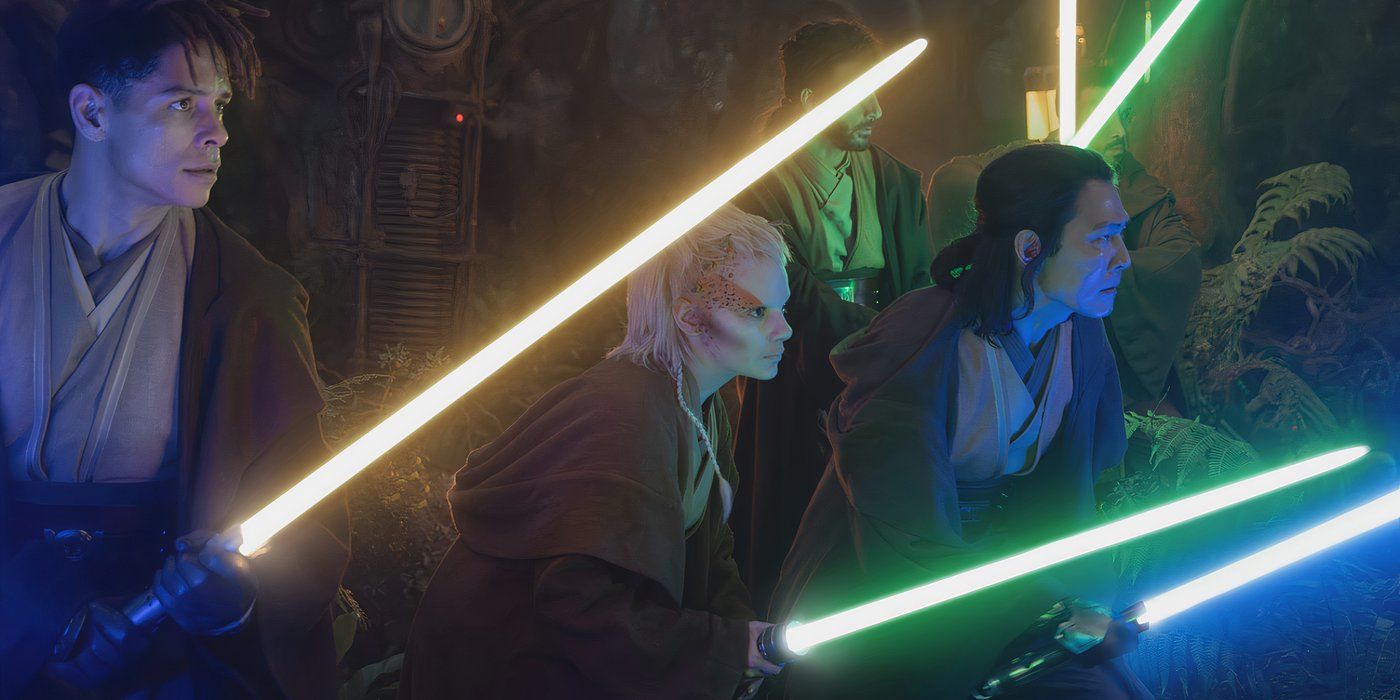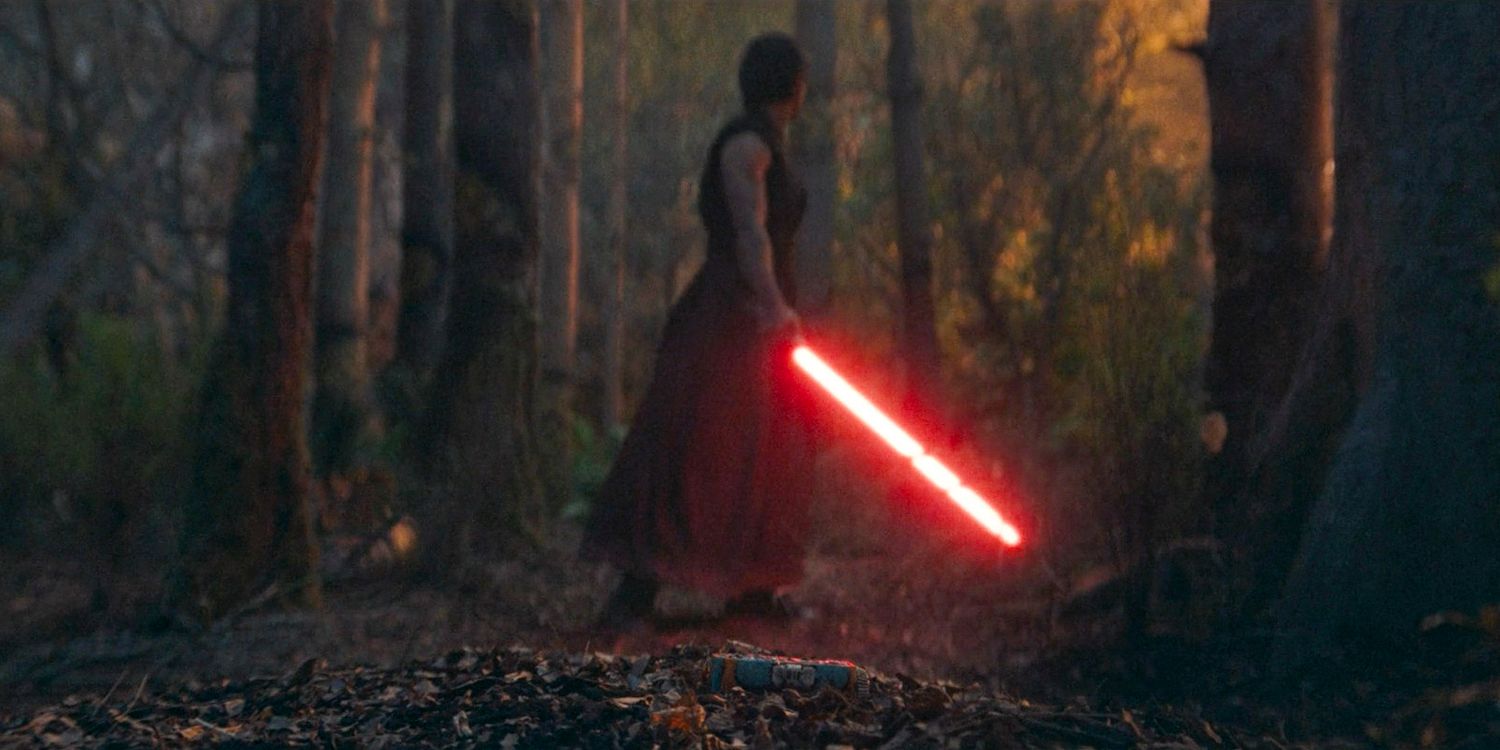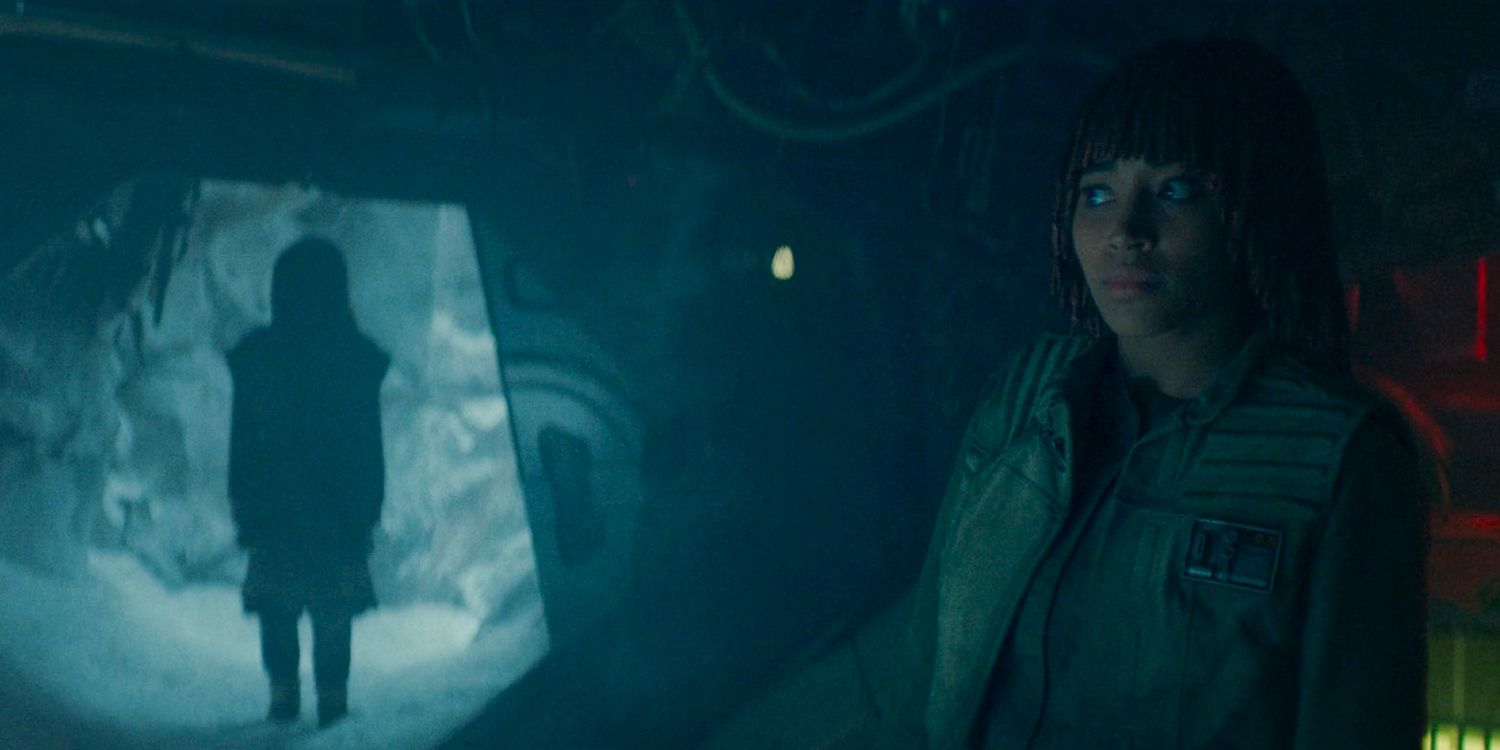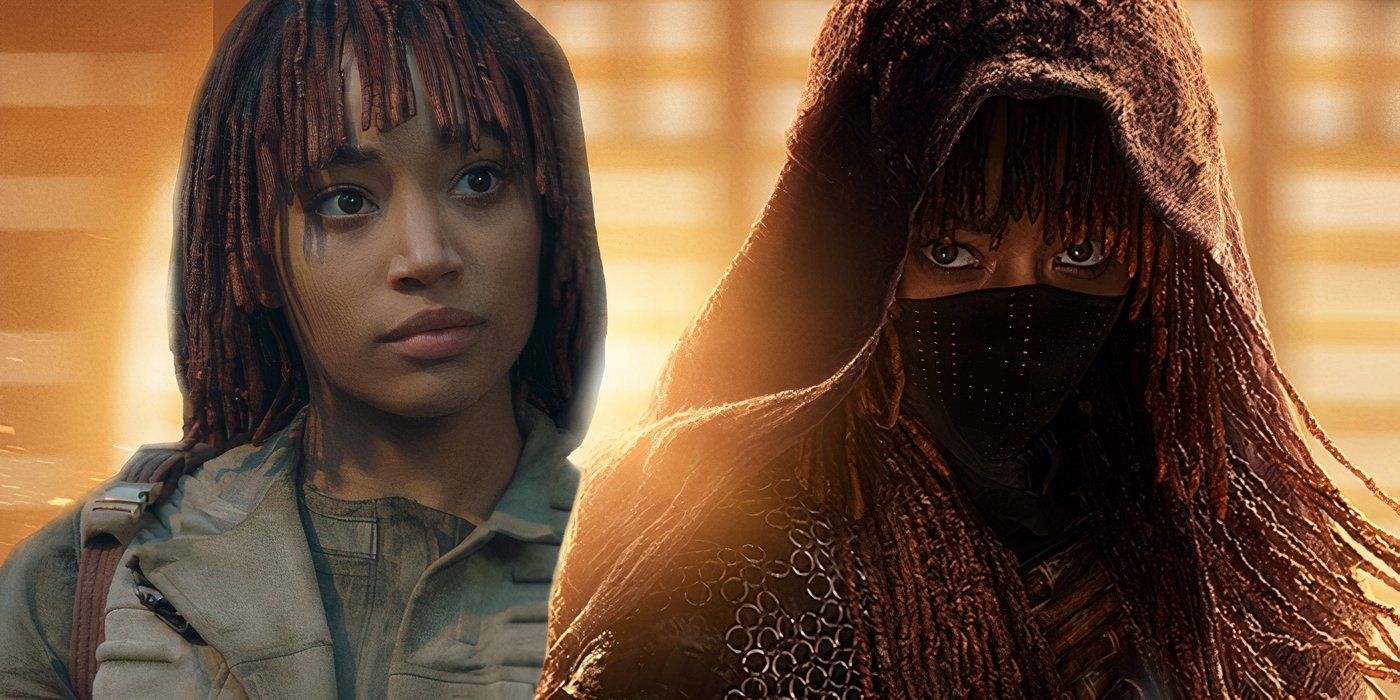The Acolyte Interview: Cinematographer Chris Teague Reveals How He Brought Star Wars' New Worlds To Life

Summary
- Chris Teague creates distinct worlds and lighting for “The Acolyte” in Star Wars series.
- He uses techniques like mapping the trajectory of locations and swatch palettes for color consistency.
- Teague talks about shooting on large sets, handling multiple characters, and using visual effects.
Screen Rant spoke to award-winning cinematographer Chris Teague about his tremendous work on The Acolyte, which culminated in the spectacular battle in episode 5. Set at the tail-end of the High Republic Era, roughly a century before the events of the Skywalker saga, The Acolyte is a murder mystery with a difference. Over the course of the first five episodes, investigations into a spate of Jedi assassinations have ultimately led the Jedi to a Sith Lord.
Screen Rant spoke to award-winning cinematographer Chris Teague ahead of the release of The Acolyte episode 5, and he revealed some of the secrets that make this show tick. He particularly focused on the show’s innovative use of lighting, which is so much improved over nighttime scenes in shows such as Obi-Wan Kenobi, and some of the work he’s most proud of. He gave a sense of just how much work really goes into bringing Star Wars to life.
Related
Star Wars: The Acolyte Episode Guide – Cast Members, Biggest Takeaways & Easter Eggs
Here’s everything you need to follow along with Star Wars: The Acolyte, from references and trivia to main takeaways from each new episode.
Screen Rant: Now for the benefit of our readers, could you tell us a little about your background, and your past experience, particularly working with Leslye Headland?
Chris Teague: I started as a cinematographer, mostly shooting independent features, and moved in TV maybe about seven or eight years ago and worked with Leslye for the first time on Russian doll. And that was an incredible experience, it was a real opportunity for me to kind of do something where the visual component of the show had, I felt like a huge part of was, it was a big element of the storytelling.
She was a wonderful collaborator, and really trusted me and just felt we made a good team. I was fortunate to be in the loop on the Star Wars show, which was in development for many years. And I was just so grateful that she put me in the mix, to meet with everybody to come on board the show.
Screen Rant: So how is The Acolyte different to what you’ve done before? And what lessons would you say have translated into it?
Chris Teague: The way I try to approach it is, at its heart, any story that you’re trying to tell… There are similarities in approach, which is to say, you’re always telling a story from a person’s perspective; you’re always talking about relationships, you’re talking about obstacles that people are trying to overcome, whether they’re external or internal. And that’s the same whether it’s a sort of a murder mystery comedy, like Only Murders In The Building, or whether it’s The Acolyte. And I think that’s the clear foundation, that’s the thing you need to take care of most, in the way you’re using the camera to tell the story.
And then beyond that, there is this whole atmospheric world building component that is also important to any kind of project you work on, and to an exceptional level on a show like this. There’s a lot for me to kind of get up to speed on in terms of really getting to know the Star Wars universe on a detailed and granular level; I have seen all the films and I’ve always been a fan, but to really kind of break it down and understand how these movies were created was a huge process for me.
And then also to understand how all these different kinds of crafts work on a on a show like this – like special effects and the creature effects that Neal Scanlan does are amazing work; and working with the props department and understanding the way they work, the way they create things, and being in touch with them to understand how best to photograph them and work with them so that we can create the the effects that we’re after.
One of the funnest examples of that for me is in Episode Four and Five; most of the episodes happen on on this forest planet so far. And our special effects department had Dave Watkins with this brilliant idea to create a cloud basically on our set, where we would keep the air temperature cold down down on the ground, and then keep it hot up in the rafters. And then by doing that, we could kind of set this level of cloud cover up in the trees that both on one hand looks very cinematic and foreboding, which is great, which is what we were going for.
But on the other hand, it really helped us hide a lot of our lighting and set structure. And so we’re photographing a lot more of our set without having to worry about visual effects or blue screen or things like that. So those were kind of like the novel kind of practical approaches. That was the ethos of what we were trying to do with with the show. Because we felt like that would lend a lot to the look of the show and and give it this more kind of classic handmade energy that that what we were kind of after.
Chris Teague Explains How The Planets Of The Acolyte Were Created
Screen Rant: I believe you use a lot of hand-painted backdrops in The Acolyte. How did you integrate those seamlessly into your shots?
Chris Teague: Yeah, It’s a part of it is, you know, great set design and the matching tonalities. Between the backgrounds, the painted backdrops, and in the foreground is part of it is lighting, getting the right quality of light on those drops, so that they’re present, but don’t draw too much attention to themselves. And they looked great. I mean,
it really wasn’t as challenging in most situations as I thought it might have been
.There’s one particular set in Khofar and Episode Four, where the moth fields set actually ended up being tucked away in a real good, small corner of our set. And we sort of leaned into that. And because that’s that space needed to feel kind of murky and mysterious, like you kind of wouldn’t know where one of these creatures is going to be coming out from behind a tree or behind a corner. So we made it feel quite dark and foggy and moody. But you know, it’s funny when that set is actually really a handful of trees, and then a painted backdrop that just mirrors the shape of those trees and is detailed in such a way to appear as if it’s going off into infinity. And so with the right combination of smoke, effects, fog effects, lighting and color, I felt like we were able to kind of blend all those elements together and create something that felt much bigger than it actually was in real life.
Chris Teague Reveals How The Lightsaber Combat Was Handled
Screen Rant: On the subject of lighting, how do you factor in the illumination of lightsabers in the scenes? We’ve had some occasions in the past where they’ll seem to have caused quite a bit of trouble with the photography. So how do you balance that?
Chris Teague: I mean, you know, in our, in our testing with the sabres, we realized that the look that we were developing for the camera had some challenges,
particularly in the blue areas where a very saturated blue would sort of skew in a really strange way
. And so we needed to kind of modify the look to protect for that blue and make sure it really came through as accurately as possible . So there was that component to it.And then for the night work with all these lightsabers, it is all about finding this balance, where you create a realistic level of light in the set that feels dark enough to believe that it’s night. But knowing that we’re not, we’re not the kind of show that we’re trying to have everybody fall off and move into full shadow, we still want to see the space, but we still want to sell the fact that it’s night. And actually, the lightsabers really help with that, because they create this bright highlight and the trick of the eye that always happens.And it’s one of the greatest ways to sell night on camera is that if you have a light source, you know, it’s some for some reason, it just makes the rest of the world feel darker basically, because you have something bright on camera. And so the lightsaber has really helped us with that.
Screen Rant: I can imagine it was harder with The Acolyte as well because you’ve got such a range of lightsaber colors – you’ve got everything from yellow to green to blue to red, purple with Vernestra Rwoh – I can imagine that was really hard to balance.
Chris Teague: Yeah, it is and it’s hard when you get into a scene where you have many characters with many different colors, and you don’t want the scene to start to feel like a carnival per se; I mean there’s a great component where each character has a color that feels right for them, which is cool; but that was definitely what we talked about with should Yord have a yellow lightsaber. Okay, if he does, then Jecki, maybe Jecki has a green one,
who’s going to be in what scene together? And how are these colors gonna play off each other?
That was another big factor.
Screen Rant: How did the original trilogy influence the work you did on The Acolyte? Because I believe that was particularly important to influencing you?
Chris Teague: The original trilogy was really a guiding influence for me and for Leslye. We talked a lot about how George Lucas’ approach was all about simplicity and being straightforward; that less is more, that we’re not going to do a tonne of shots. Every scene, we’re going to pick the shots that really count and we’re going to move the camera when it really means something, we’re not going to overstimulate or overload the audience. There’s gonna be so much going on already; with the fight choreography, we want to be able to see these sets and see this world and see the way our characters inhabit them.
So it really was more of a kind of less is more approach, which actually is more difficult than it sounds and particularly because it means that the fights the fight choreography has to be really solid. And because we’re seeing it, we’re not trying to hide anything. And the lighting, everything’s got to it has to be on point because we’re not cutting away from anything, we’re lingering on stuff, maybe more than you typically would on a traditional TV show. So in that way, the three originals were a big influence.
I mean, also in terms of the color palette, you know, I love how the originals Have this mixture of, you know, kind of earthy tones and grittier textures, but then also these really lush, bright pops of colors, these oranges and blues and reds and I feel like that’s that’s not so much the trend these days. But we did that quite a bit in Russian Doll; we had some really rich colors in that. And I loved it. And I wanted to kind of bring that back to the show as well. And, you know, that’s something there’s, again, there’s a balance there, where you it’s about the types of colors you have in frame at any given moment. And you know, how many colors you have in a frame where you can kind of achieved something that I think feels visually pleasing and not to kind of garish or kind of overwrought.
Chris Teague Discusses The Acolyte’s Stunning Fight Choreography
Screen Rant: On the subject of the fight choreography, how did you actually film some of those scenes?
Chris Teague:
We just had an exceptional team
; we had Chris Gow, and our action designer, Mark Gunther, our stunt coordinator, they were just the best of the best I think. They had a system where they would basically have the fight choreography on a 3D mmodel on the set. And then we could kind of virtually photograph them. So you can choose your lenses, you can do the camera moves, and you can basically sort of shoot the scene before you shoot the scene in a kind of virtual sense.So you can really see how the action is going to play from a given position with a given lens, and how the timing is going to work how one shots going to cut to the next. So that after you kind of refine all all of those elements, you have a very clear picture of how things were going to look in the finished cut. So you can really focus on what’s what’s important. And then that’s not to say that’s exactly how the scene ends up. Looking at the end of the day, when we get there and we start shooting and we see how things play. We may do slight variations, we might move the camera a little bit differently. But it gave us this incredible guideline and gave us the confidence to know exactly what we needed to do. Because these these fight scenes are extremely complicated, involving so many different shots, and so they take a lot of time to shoot. So the more we were able to focus on exactly what we needed, the better or the whole sequence is, you’re just not wasting as much time.
Screen Rant: Moving to one particular example, I wanted to ask about the cold open on The Acolyte, that stunning fight scene between Mae and Indara. I actually saw that on the big screen at The Phantom Menace. And it looked gorgeous on there. Really did. Could you tell us a bit about the inspiration for that cold open?
Chris Teague: I guess to truly talk about the inspiration, I feel like Leslye might be the better person. To me, it felt like the goal of that cold open is to encapsulate everything that this show is about, which is which is to say it has these classic Star Wars elements. It’s got the cantina, but then it also has this very important martial arts component. It has this mystery element, which is like the beginning of a Western, Butch Cassidy the Sundance Kid. And that was a real reference for me in terms of the lighting and photography of that scene, this idea that a stranger walks into a bar and and he has has this surprising confrontation. We probably spent more time on the planning and execution of that scene than anything else in the show. And it was because we wanted it to really put our to put our best foot forward and to really represent what the what the whole show was about. And you know, just just surprise and delight the viewers.
Chris Teague Reveals How The Worlds Of The Acolyte Were Created
Screen Rant: Now, we’ll move on to another scene that I thought was a real standout, which was the dream, sort of dream slash vision sequence. When Osha has that vision of her sister and realizes Mae is alive. How did you pull that off with so many different effects and the snowfall effect and so on?
Chris Teague: I love that sequence, because it is a combination of a lot of different effects. The initial idea was to make it as practical as possible, using old tricks to make transitions happen; Osha runs from a burning forest into her bedroom and Brendok, and it’s one move from left to right, in one world, and then left to right in the next world, and there’s just a live wipe that carries you from space to space. It’s those kind of things, there’s no digital trickery necessary and that felt right for the style of the show. But we do have this really magnificent, and I think, quite subtle visual effect when when Osha first enters the burning forest, and we see her there; iit’s sort of a fusing of two shots, basically, where we merge, where visual, or visual effects team merged, the crash ship and her in the burning forests.
And then my favorite one, I think, is the transition out of that sequence, which is Osha looking down at her, you know, the younger version of her, her sister Mae, and the world behind her sort of wipes out again into the snowy world, and snow starts falling around her. And we accomplish that simply by putting this white screen behind her, which, you know, when there’s no light on it, it’s basically invisible. But as we slowly dim the lights up on it, it turned into this kind of opaque white backing that washed out the whole scene and created this really nice, almost kind of seamless edit between that space and the crash ship.
Screen Rant: How do you make each world look and feel distinctive, including on a lighting level? How do you handle each different planet?
Chris Teague: I made a map, basically, of the trajectory of the show, strictly in terms of locations, and then I started to do almost like swatch palettes or reference images, so that I could see if all in one space. I could really see almost like a color story and know that we wouldn’t be repeating the same themes over and over again. The prison ship; Alien and Aliens were a big influence for that, to try to create something a little more, almost sci-fi noir or moody, and then to the snow planet.
For the snow planet, I thought a lot about Hoth, of course, but how to do this in a way that felt a little bit new and different, while also thinking about all the things that we loved about that set. The same was with the forest set, we studied behind the scenes photos of Dagobah to understand what it was about that place that made it feel so, so magical and just so kind of deep entangled and kind of endless. We tried to do justice to that kind of energy and experience, while making sure this planet has its own its own look and feel. It was a lot of incredible work by Kevin Jenkins, our production designer.
Screen Rant: There’s a lot of time on that planet, enough time for the day to be passing. And so you can see the light levels changing. How do you actually do that in a set in practical terms and how do you make sure that your photography is still working at different light levels?
Chris Teague:
That is like a cinematographer’s dream
, I feel like the the way the arc of that story parallels the changing of daylight over the course of the scenes means the light really takes an important role in the storytelling. Basically, I broke it down in the scripts to four different looks that transition us from day into night. And we did a lot of tests with colors and light levels. We just found the right transition from a kind of a more golden light to a deeper amber to almost kind of a blood red, which is what we saved for that climactic moment, when Mae goes into Kelnacca’s shelter and sees that he’s been killed, where the sun literally goes down behind her. And we know that everybody is about to be in really big trouble.
How Does The Acolyte Handle Osha & Mae?
Screen Rant: One of the interesting things with The Acolyte is you’ve got Amandla Stenberg, playing two characters, not one. How do you handle the different characters from a from a sort of cinematographic viewpoint? How do you approach them? Do you emphasize them differently?
Chris Teague: I tend to approach characters from the perspective of what’s taking place within a scene. I tend to let that be the driving force, whether a character feels vulnerable, or they feel powerful, or they feel unstable, like those are the kinds of things that tend to drive the actual photography of the character.
But then there’s the the twin component of things, when those characters appear on camera together, there’s a need to kind of really know what the shots are, how you’re going to compose those scenes and break down what kind of effects are going to be necessary to accomplish that. And most of the time, honestly, with those kinds of scenes, you can do very simple old school methods like get a body double for your foreground actor, you know, and flip flop them. And then for the kind of key dramatic moments, that’s when we would start to employ things like visual effects and face replacement and things like that.
Screen Rant: I’ll wrap this up with one last question here. What would you say you are the most proud of in The Acolyte?
Chris Teague:
I really do love Episodes Four and Five.
And I know you haven’t seen Five yet but it just explodes in a really wonderful way that’s that Four sets it up beautifully. And like I said, it’s like light in Four and Five is just an essential component to the storytelling. It’s a shame they, they have to release one through four, because four and five just go together so beautifully. The set for Khofar is by far the biggest set I’ve ever had the good fortune of being able to light and I am very happy with the way it turned out.The fact that we could create all these different looks in the same space and make a space that even though in was was enormous, it was still a challenge to make it feel as though our characters are travelling miles and miles through through this forest, when really we’ve got a big warehouse full of trees to work with. And so we kind of had to use every trick in the book to make it look bigger than it was or really make it look like they’re travelling. So I’m very proud of how we were able to kind of pull that off. It’s a really fun one.
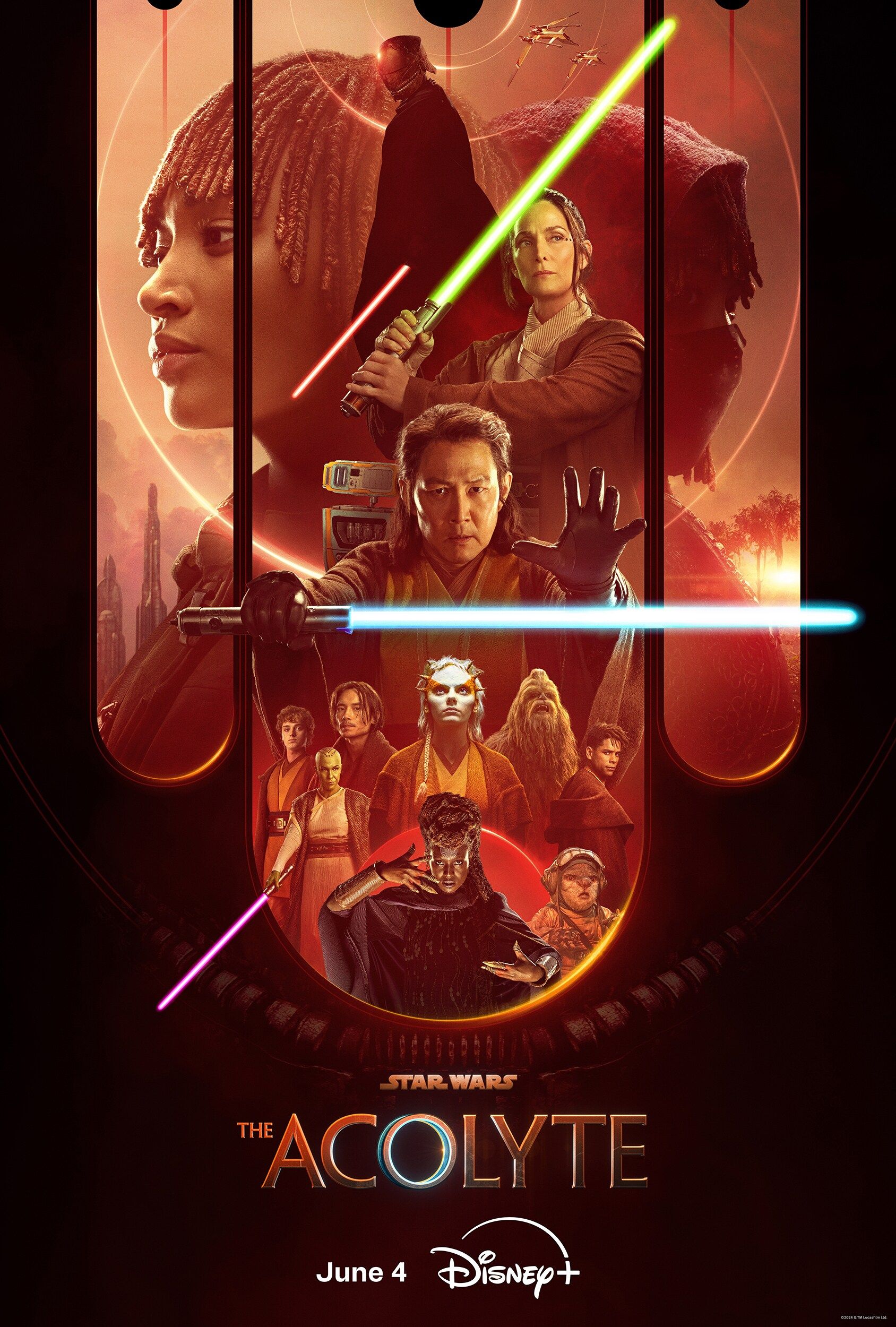
The Acolyte
The Acolyte is a television series set in the Star Wars universe at the end of the High Republic Era, where both the Jedi and the Galactic Empire were at the height of their influence. This sci-fi thriller sees a former Padawan reunite with her former Jedi Master as they investigate several crimes – all leading to darkness erupting from beneath the surface and preparing to bring about the end of the High Republic.

